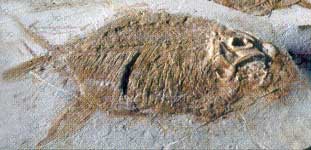A generalized list of important milestones in European fossil hunting, first formally identified dinosaurs and professional fossil collector, Mary Anning.

Portrait of Mary Anning, born 1799 in Lyme Regis, England and the first professional fossil collector. Lyme Regis is known for its seacliffs of mudstone and Jurassic Shale. Anning found the first known ichthyosaur in 1811 which had fell from the cliffs. Another discovery followed thirteen years later, the first known and near-complete plesiosaur skeleton.
Europe is rich in fossils, though fossils were often discovered by accident in the earliest years of Paleontology. One of the most astounding finds was in 1776, in a chalk quarry in the Netherlands, a giant crocodile-like skull, called the Beast of Maastricht. Scientists of the day believed the remains to belong to an extant species, strongly resembling modern crocodiles. Later scientists identified the fossil to be remains of a Mososaur.
An important publication by an Italian naturalist, was issued in 1784 on a fossil found in Solnhöfen. The fossil was of a small animal, but unlike any known species. The creature resembled cross between bat and bird, known today as the Pterosaur, the first fossil studied in a systematic way. This fossil soon became important news in Paleontological circles, and quarry workers kept a sharp eye for potential new fossil finds.
By the 1800's, European quarries like the one at Solnhöfen were generating a steady flow of new fossil discoveries. It was during this time that young Mary Anning began professionally collecting fossils. A resident of England, she lived on the coast of Dorset. Erosion from sea water was continually revealing new fossils in the cliff walls. Among her finds was a near-complete extinct reptile, the ichthyosaur. With ever more fossil finds, the concept of extinction became more widely accepted.
The first formal description of a dinosaur was made in 1676 by Robert Plot, a museum curator in England. The discovery of Plot, which consisted of a giant thighbone, was thought at the time to be that of a large mammal, perhaps even, a giant human. One hundred and forty years passed, and further remains were discovered in an English quarry. Later, the species was identified among reptiles instead of mammals. William Buckland, a geologist examined the fossils and identified them as belonging to a carnivorous reptile, which he named Megalosarus, meaning "giant lizard". Geologist Gideon Mantel, followed the next year with another new discovery, identifying the fossil remains of Iguanodon.
In the 1800's, geologists desired to classify many newly discovered fossil species among branches of reptiles, however this changed in 1841 with Richard Owen who demonstrated both Megalosaurus and Iguanodon differed in many ways from other reptiles. Owen proposed dinosaur, as the name for such extinct reptile species. Following this new classification, paleontology advanced forward. In 1861, the first Archaeopteryx fossil was discovered in the Solnhöfen quarry and with the approaching 1900's European fossil hunters began importing fossils from around the world. The new discoveries and fossil collections contributed to the development of natural history museums in Berlin, Paris and London. Paleontologists continued their search for fossils, extinct marine species which included ichthyosaur and plesiosaur, and ice age mammals such as mammoths, rhinoceroses and bears. Some fossil finds included our early human ancestors, and some such as Neanderthal man, both fossil and surviving artifacts.

Author David Burnie explains quarry workers carefully split thin sheets of limestone, revealing the well preserved fossils of 150 million year old creatures from the Jurassic.
Featured above is a fossil shrimp from the southern German Solnhöfen quarry. This quarry has produced fossils of soft bodied creatures, including jellyfish.

The Solnhöfen quarry, a famous site for Archaeopteryx, numerous pterosaur, fish and insect fossils, was built up from the fine-grain sediment that settled in coral reef during the Late Jurassic period. Rock particles which entombed the creatures are so fine, they preserved the creatures with great details intact.
REFERENCES  Bringing Fossils to Life, An Introduction to Paleobiology, McGraw Hill Publishers, Donald R. Prothero
Bringing Fossils to Life, An Introduction to Paleobiology, McGraw Hill Publishers, Donald R. Prothero
 Kingfisher Illustrated Dinosaur Encyclopedia, Kingfisher Publishers, David Burnie
Kingfisher Illustrated Dinosaur Encyclopedia, Kingfisher Publishers, David Burnie
FURTHER SUGGESTED READING
Adrienne Mayor's books
1) The First Fossil Hunters (Princeton 2000) explains how ancient Greek and Roman discoveries of mysterious petrifed bones of extinct dinosaurs and mastodons led to myths about griffins, giants, and monsters. Watch for "Ancient Monster Hunters" on the History Channel.
2) Fossil Legends of the First Americans (Princeton 2005) gathers exciting Native American discoveries and myths about fossils, from tiny shells to enormous dinosaur bones, with stories from more than 45 different tribes, beginning with the Aztecs & Incas.
Stephen Meyer's article, "Are Dinosaurs Mentioned in the Bible?"


No comments:
Post a Comment